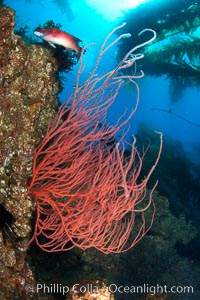
Red gorgonian on rocky reef, below kelp forest, underwater. The red gorgonian is a filter-feeding temperate colonial species that lives on the rocky bottom at depths between 50 to 200 feet deep. Gorgonians are oriented at right angles to prevailing water currents to capture plankton drifting by.
Species: Red gorgonian, Leptogorgia chilensis, Lophogorgia chilensis
Location: San Clemente Island, California
Image ID: 23425
Species: Red gorgonian, Leptogorgia chilensis, Lophogorgia chilensis
Location: San Clemente Island, California
Image ID: 23425
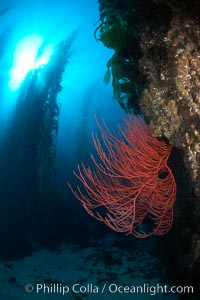
Red gorgonian on rocky reef, below kelp forest, underwater. The red gorgonian is a filter-feeding temperate colonial species that lives on the rocky bottom at depths between 50 to 200 feet deep. Gorgonians are oriented at right angles to prevailing water currents to capture plankton drifting by.
Species: Red gorgonian, Leptogorgia chilensis, Lophogorgia chilensis, Macrocystis pyrifera
Location: San Clemente Island, California
Image ID: 23431
Species: Red gorgonian, Leptogorgia chilensis, Lophogorgia chilensis, Macrocystis pyrifera
Location: San Clemente Island, California
Image ID: 23431
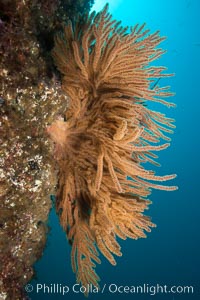
California golden gorgonian on rocky reef, underwater. The golden gorgonian is a filter-feeding temperate colonial species that lives on the rocky bottom at depths between 50 to 200 feet deep. Each individual polyp is a distinct animal, together they secrete calcium that forms the structure of the colony. Gorgonians are oriented at right angles to prevailing water currents to capture plankton drifting by.
Species: California golden gorgonian, Muricea californica
Location: San Clemente Island, California
Image ID: 25397
Species: California golden gorgonian, Muricea californica
Location: San Clemente Island, California
Image ID: 25397
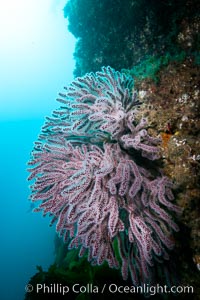
Brown gorgonians on rocky reef, below kelp forest, underwater. Gorgonians are filter-feeding temperate colonial species that live on the rocky bottom at depths between 50 to 200 feet deep. Each individual polyp is a distinct animal, together they secrete calcium that forms the structure of the colony. Gorgonians are oriented at right angles to prevailing water currents to capture plankton drifting by.
Species: Brown gorgonian, Muricea fruticosa
Location: San Clemente Island, California
Image ID: 25398
Species: Brown gorgonian, Muricea fruticosa
Location: San Clemente Island, California
Image ID: 25398
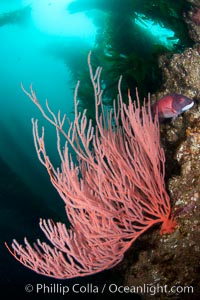
Red gorgonian on rocky reef, below kelp forest, underwater. The red gorgonian is a filter-feeding temperate colonial species that lives on the rocky bottom at depths between 50 to 200 feet deep. Gorgonians are oriented at right angles to prevailing water currents to capture plankton drifting by.
Species: Red gorgonian, Leptogorgia chilensis, Lophogorgia chilensis
Location: San Clemente Island, California
Image ID: 25406
Species: Red gorgonian, Leptogorgia chilensis, Lophogorgia chilensis
Location: San Clemente Island, California
Image ID: 25406
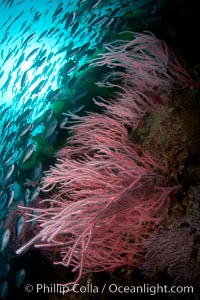
Red gorgonian on rocky reef, below kelp forest, underwater. The red gorgonian is a filter-feeding temperate colonial species that lives on the rocky bottom at depths between 50 to 200 feet deep. Gorgonians are oriented at right angles to prevailing water currents to capture plankton drifting by.
Species: Red gorgonian, Lophogorgia chilensis
Location: San Clemente Island, California
Image ID: 25413
Species: Red gorgonian, Lophogorgia chilensis
Location: San Clemente Island, California
Image ID: 25413
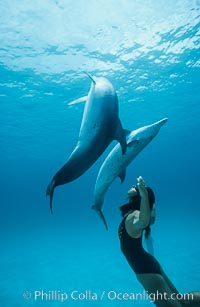
Atlantic spotted dolphin, Olympic swimmer Mikako Kotani.
Species: Atlantic spotted dolphin, Stenella frontalis
Location: Bahamas
Image ID: 00019
Species: Atlantic spotted dolphin, Stenella frontalis
Location: Bahamas
Image ID: 00019
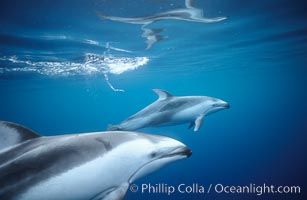
Pacific white sided dolphin.
Species: Pacific white-sided dolphin, Lagenorhynchus obliquidens
Location: San Diego, California
Image ID: 00048
Species: Pacific white-sided dolphin, Lagenorhynchus obliquidens
Location: San Diego, California
Image ID: 00048
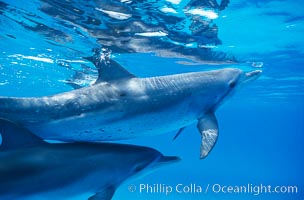
Atlantic spotted dolphin.
Species: Atlantic spotted dolphin, Stenella frontalis
Location: Bahamas
Image ID: 00676
Species: Atlantic spotted dolphin, Stenella frontalis
Location: Bahamas
Image ID: 00676
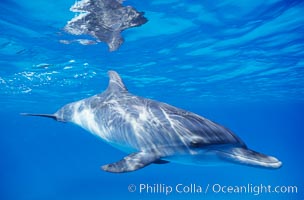
Atlantic spotted dolphin, juvenile.
Species: Atlantic spotted dolphin, Stenella frontalis
Location: Bahamas
Image ID: 00679
Species: Atlantic spotted dolphin, Stenella frontalis
Location: Bahamas
Image ID: 00679
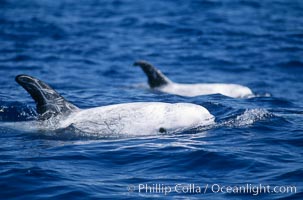
Rissos dolphin surfacing with eye showing. Note distinguishing and highly variable skin and dorsal fin patterns, characteristic of this species. White scarring, likely caused by other Risso dolphins teeth, accumulates during the dolphins life so that adult Rissos dolphins are almost entirely white. San Diego.
Species: Risso's dolphin, Grampus griseus
Location: San Diego, California
Image ID: 02314
Species: Risso's dolphin, Grampus griseus
Location: San Diego, California
Image ID: 02314
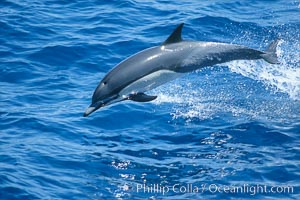
Common dolphin.
Species: Common dolphin, Delphinus delphis
Location: San Diego, California
Image ID: 02408
Species: Common dolphin, Delphinus delphis
Location: San Diego, California
Image ID: 02408
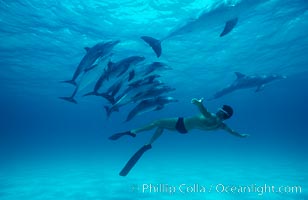
Atlantic spotted dolphin, Olympic swimmer Matt Biondi.
Species: Atlantic spotted dolphin, Stenella frontalis
Location: Bahamas
Image ID: 00009
Species: Atlantic spotted dolphin, Stenella frontalis
Location: Bahamas
Image ID: 00009
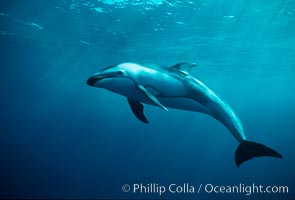
Pacific white sided dolphin, open ocean.
Species: Pacific white-sided dolphin, Lagenorhynchus obliquidens
Location: San Diego, California
Image ID: 00025
Species: Pacific white-sided dolphin, Lagenorhynchus obliquidens
Location: San Diego, California
Image ID: 00025
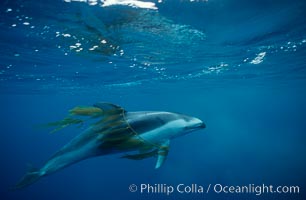
Pacific white sided dolphin, Kelp carry.
Species: Pacific white-sided dolphin, Lagenorhynchus obliquidens
Location: San Diego, California
Image ID: 00044
Species: Pacific white-sided dolphin, Lagenorhynchus obliquidens
Location: San Diego, California
Image ID: 00044
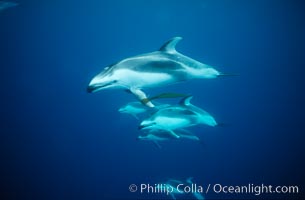
Pacific white sided dolphin, carrying drift kelp.
Species: Pacific white-sided dolphin, Lagenorhynchus obliquidens
Location: San Diego, California
Image ID: 00046
Species: Pacific white-sided dolphin, Lagenorhynchus obliquidens
Location: San Diego, California
Image ID: 00046
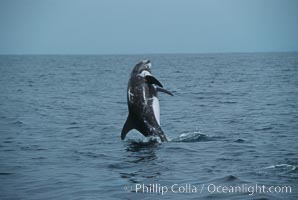
Rissos dolphin, breaching. Note distinguishing and highly variable skin and dorsal fin patterns, characteristic of this species. White scarring, likely caused by other Risso dolphins teeth, accumulates during the dolphins life so that adult Rissos dolphins are almost entirely white. San Diego.
Species: Risso's dolphin, Grampus griseus
Location: San Diego, California
Image ID: 00983
Species: Risso's dolphin, Grampus griseus
Location: San Diego, California
Image ID: 00983
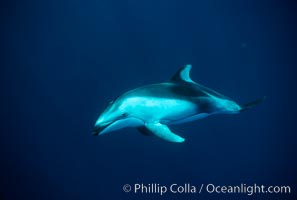
Pacific white sided dolphin.
Species: Pacific white-sided dolphin, Lagenorhynchus obliquidens
Location: San Diego, California
Image ID: 04947
Species: Pacific white-sided dolphin, Lagenorhynchus obliquidens
Location: San Diego, California
Image ID: 04947
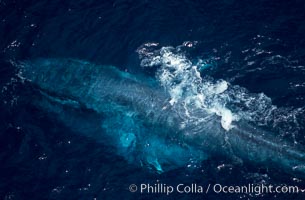
Blue whale feeding and surfacing amid krill with engorged throat, aerial photo, Baja California.
Species: Blue whale, Balaenoptera musculus
Image ID: 06058
Species: Blue whale, Balaenoptera musculus
Image ID: 06058
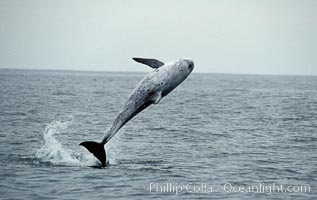
A Rissos dolphin leaps from the ocean in a full breach. Note distinguishing and highly variable skin and dorsal fin patterns, characteristic of this species. White scarring, likely caused by other Risso dolphins teeth, accumulates during the dolphins life so that adult Rissos dolphins are almost entirely white. Offshore near San Diego.
Species: Risso's dolphin, Grampus griseus
Location: San Diego, California
Image ID: 07597
Species: Risso's dolphin, Grampus griseus
Location: San Diego, California
Image ID: 07597
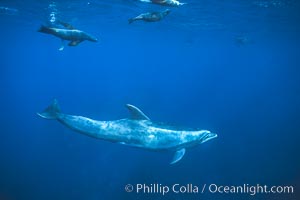
Pacific bottlenose dolphin, California sea lions.
Species: Bottlenose dolphin, Tursiops truncatus, Zalophus californianus
Location: Guadalupe Island (Isla Guadalupe), Baja California, Mexico
Image ID: 01156
Species: Bottlenose dolphin, Tursiops truncatus, Zalophus californianus
Location: Guadalupe Island (Isla Guadalupe), Baja California, Mexico
Image ID: 01156
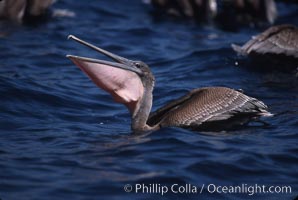
Brown pelicans feeding on krill.
Species: Brown pelican, Pelecanus occidentalis
Location: Coronado Islands (Islas Coronado), Baja California, Mexico
Image ID: 03177
Species: Brown pelican, Pelecanus occidentalis
Location: Coronado Islands (Islas Coronado), Baja California, Mexico
Image ID: 03177
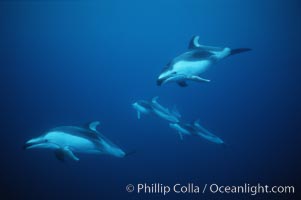
Pacific white sided dolphin.
Species: Pacific white-sided dolphin, Lagenorhynchus obliquidens
Location: San Diego, California
Image ID: 04943
Species: Pacific white-sided dolphin, Lagenorhynchus obliquidens
Location: San Diego, California
Image ID: 04943
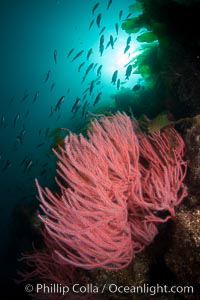
Red gorgonian on rocky reef, below kelp forest, underwater. The red gorgonian is a filter-feeding temperate colonial species that lives on the rocky bottom at depths between 50 to 200 feet deep. Gorgonians are oriented at right angles to prevailing water currents to capture plankton drifting by.
Species: Red gorgonian, Leptogorgia chilensis, Lophogorgia chilensis
Location: San Clemente Island, California
Image ID: 25404
Species: Red gorgonian, Leptogorgia chilensis, Lophogorgia chilensis
Location: San Clemente Island, California
Image ID: 25404
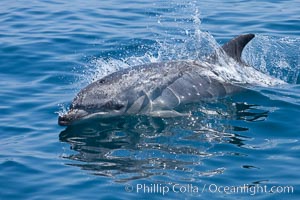
Bottlenose dolphin, breaching the surface of the ocean, offshore of San Diego.
Species: Bottlenose dolphin, Tursiops truncatus
Location: San Diego, California
Image ID: 26805
Species: Bottlenose dolphin, Tursiops truncatus
Location: San Diego, California
Image ID: 26805
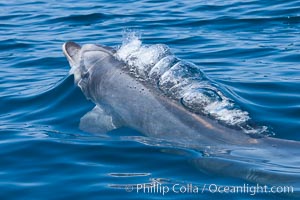
Bottlenose dolphin, bubbles forming in its exhalation just below the surface of the ocean, offshore of San Diego.
Species: Bottlenose dolphin, Tursiops truncatus
Location: San Diego, California
Image ID: 26806
Species: Bottlenose dolphin, Tursiops truncatus
Location: San Diego, California
Image ID: 26806
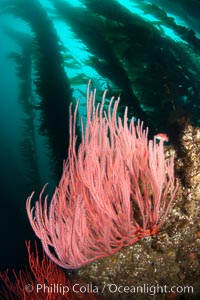
Red gorgonian on rocky reef, below kelp forest, underwater. The red gorgonian is a filter-feeding temperate colonial species that lives on the rocky bottom at depths between 50 to 200 feet deep. Gorgonians are oriented at right angles to prevailing water currents to capture plankton drifting by.
Species: Red gorgonian, Lophogorgia chilensis
Location: San Clemente Island, California
Image ID: 25408
Species: Red gorgonian, Lophogorgia chilensis
Location: San Clemente Island, California
Image ID: 25408
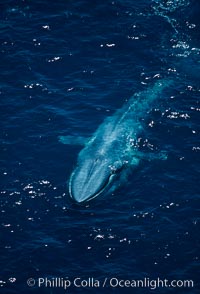
Blue whale, throat pleats distended during feeding.
Species: Blue whale, Balaenoptera musculus
Image ID: 02306
Species: Blue whale, Balaenoptera musculus
Image ID: 02306
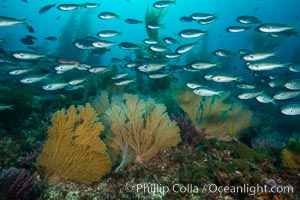
Blacksmith Chromis and California golden gorgonian on underwater rocky reef, San Clemente Island. The golden gorgonian is a filter-feeding temperate colonial species that lives on the rocky bottom at depths between 50 to 200 feet deep. Each individual polyp is a distinct animal, together they secrete calcium that forms the structure of the colony. Gorgonians are oriented at right angles to prevailing water currents to capture plankton drifting by.
Species: Blacksmith, California golden gorgonian, Chromis punctipinnis, Muricea californica
Location: San Clemente Island, California
Image ID: 30891
Species: Blacksmith, California golden gorgonian, Chromis punctipinnis, Muricea californica
Location: San Clemente Island, California
Image ID: 30891
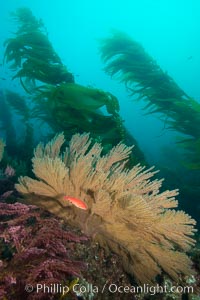
California golden gorgonian and small juvenile sheephead fishes on rocky reef, below kelp forest, underwater. The golden gorgonian is a filter-feeding temperate colonial species that lives on the rocky bottom at depths between 50 to 200 feet deep. Each individual polyp is a distinct animal, together they secrete calcium that forms the structure of the colony. Gorgonians are oriented at right angles to prevailing water currents to capture plankton drifting by.
Species: California sheephead wrasse, Semicossyphus pulcher
Location: San Clemente Island, California
Image ID: 30903
Species: California sheephead wrasse, Semicossyphus pulcher
Location: San Clemente Island, California
Image ID: 30903